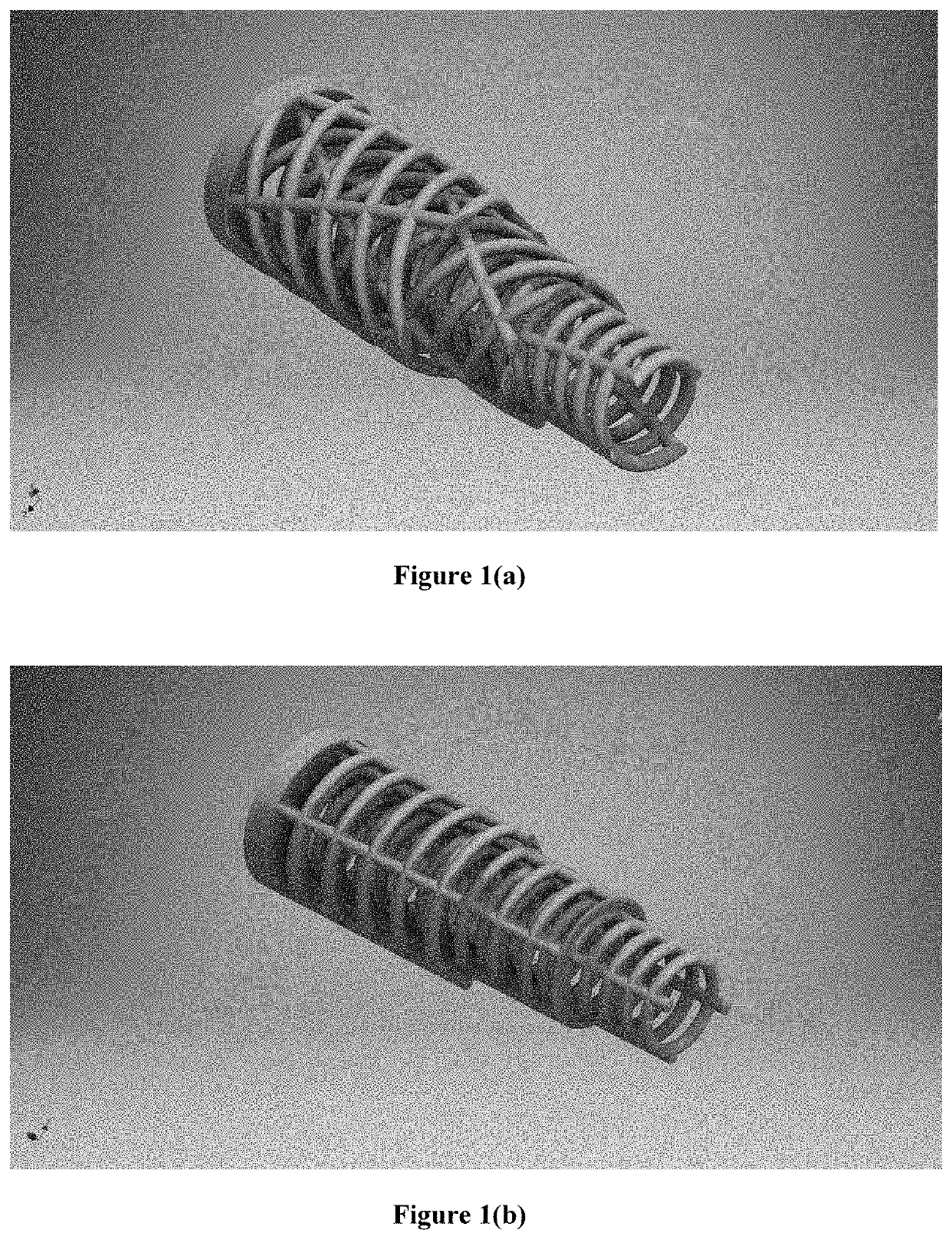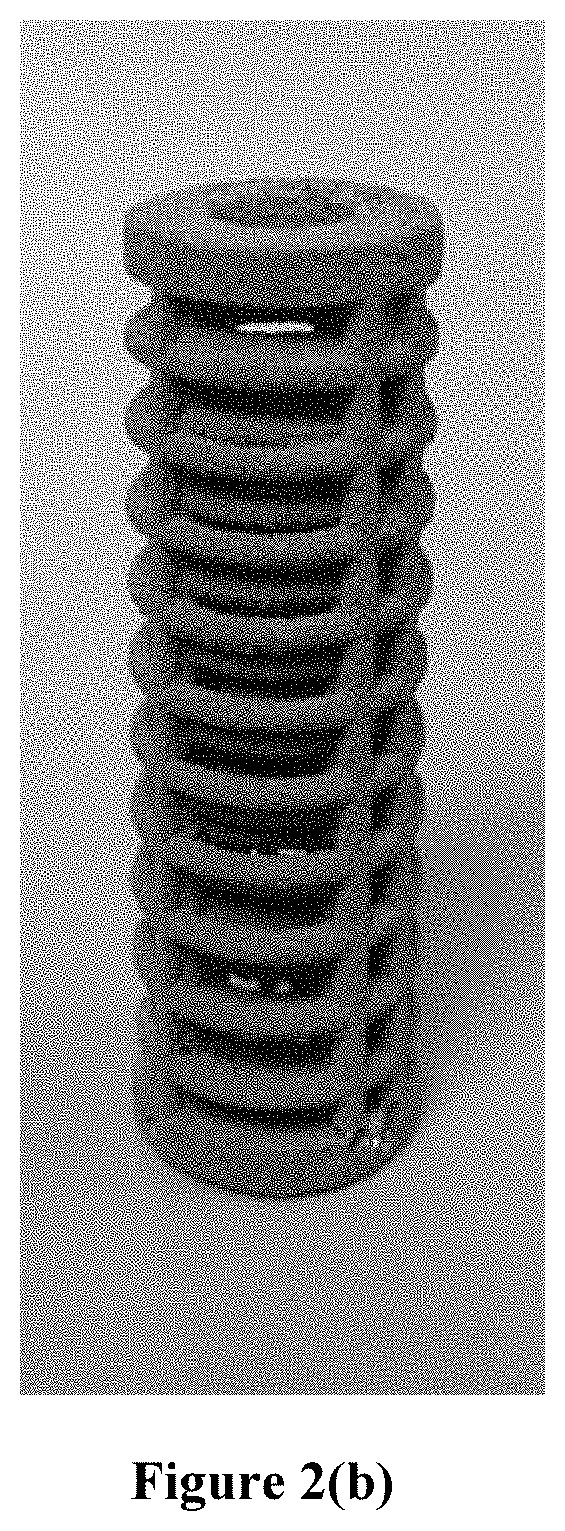Biomimetic plywood motifs for bone tissue engineering
a biomimetic plywood and bone tissue technology, applied in the field of lamellar structures with multiple levels, can solve the problems of high invasiveness, high risk of complications, and the geometric organization of most fabricated scaffold designs remains relatively unsophisticated in terms of mechanical and potential physiological performance and its relationship to the structur
- Summary
- Abstract
- Description
- Claims
- Application Information
AI Technical Summary
Benefits of technology
Problems solved by technology
Method used
Image
Examples
examples
[0046]The merits of a biomimetic scaffold design in accordance with the invention were compared with conventional mesh scaffold designs. Scaffolds were characterized under uniaxial compression testing, followed by scanning electron microscopy and micro-computer tomography analyses. Observation and connection of failure defects at the microstructural level to overall bulk scaffold mode of failure, led to the conclusions that utilizing a biomimetic lamellar plywood design improved scaffold performance similarly to native tissue by, not only, improving mechanical performance, but also mode of failure in more complex, hierarchical behaviors such as the mode of crushing and fracture propagation.
[0047]Mechanical performance of similar fiber-reinforced composite materials was previously evaluated through analysis of stress-strain performance, crushing modes, and their associated crushing mechanisms which contribute to the overall structural failure under compressive loading. Although ply o...
PUM
| Property | Measurement | Unit |
|---|---|---|
| angular rotation | aaaaa | aaaaa |
| thickness | aaaaa | aaaaa |
| particle size | aaaaa | aaaaa |
Abstract
Description
Claims
Application Information
 Login to View More
Login to View More - R&D
- Intellectual Property
- Life Sciences
- Materials
- Tech Scout
- Unparalleled Data Quality
- Higher Quality Content
- 60% Fewer Hallucinations
Browse by: Latest US Patents, China's latest patents, Technical Efficacy Thesaurus, Application Domain, Technology Topic, Popular Technical Reports.
© 2025 PatSnap. All rights reserved.Legal|Privacy policy|Modern Slavery Act Transparency Statement|Sitemap|About US| Contact US: help@patsnap.com



